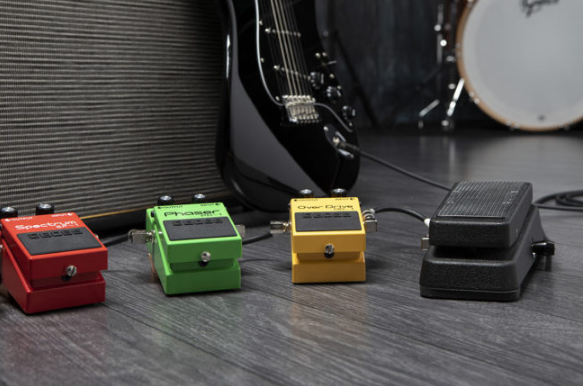Products Category
- FM Transmitter
- 0-50w 50w-1000w 2kw-10kw 10kw+
- TV Transmitter
- 0-50w 50-1kw 2kw-10kw
- FM Antenna
- TV Antenna
- Antenna Accessory
- Cable Connector Power Splitter Dummy Load
- RF Transistor
- Power Supply
- Audio Equipments
- DTV Front End Equipment
- Link System
- STL system Microwave Link system
- FM Radio
- Power Meter
- Other Products
- Special for Coronavirus
Products Tags
Fmuser Sites
- es.fmuser.net
- it.fmuser.net
- fr.fmuser.net
- de.fmuser.net
- af.fmuser.net ->Afrikaans
- sq.fmuser.net ->Albanian
- ar.fmuser.net ->Arabic
- hy.fmuser.net ->Armenian
- az.fmuser.net ->Azerbaijani
- eu.fmuser.net ->Basque
- be.fmuser.net ->Belarusian
- bg.fmuser.net ->Bulgarian
- ca.fmuser.net ->Catalan
- zh-CN.fmuser.net ->Chinese (Simplified)
- zh-TW.fmuser.net ->Chinese (Traditional)
- hr.fmuser.net ->Croatian
- cs.fmuser.net ->Czech
- da.fmuser.net ->Danish
- nl.fmuser.net ->Dutch
- et.fmuser.net ->Estonian
- tl.fmuser.net ->Filipino
- fi.fmuser.net ->Finnish
- fr.fmuser.net ->French
- gl.fmuser.net ->Galician
- ka.fmuser.net ->Georgian
- de.fmuser.net ->German
- el.fmuser.net ->Greek
- ht.fmuser.net ->Haitian Creole
- iw.fmuser.net ->Hebrew
- hi.fmuser.net ->Hindi
- hu.fmuser.net ->Hungarian
- is.fmuser.net ->Icelandic
- id.fmuser.net ->Indonesian
- ga.fmuser.net ->Irish
- it.fmuser.net ->Italian
- ja.fmuser.net ->Japanese
- ko.fmuser.net ->Korean
- lv.fmuser.net ->Latvian
- lt.fmuser.net ->Lithuanian
- mk.fmuser.net ->Macedonian
- ms.fmuser.net ->Malay
- mt.fmuser.net ->Maltese
- no.fmuser.net ->Norwegian
- fa.fmuser.net ->Persian
- pl.fmuser.net ->Polish
- pt.fmuser.net ->Portuguese
- ro.fmuser.net ->Romanian
- ru.fmuser.net ->Russian
- sr.fmuser.net ->Serbian
- sk.fmuser.net ->Slovak
- sl.fmuser.net ->Slovenian
- es.fmuser.net ->Spanish
- sw.fmuser.net ->Swahili
- sv.fmuser.net ->Swedish
- th.fmuser.net ->Thai
- tr.fmuser.net ->Turkish
- uk.fmuser.net ->Ukrainian
- ur.fmuser.net ->Urdu
- vi.fmuser.net ->Vietnamese
- cy.fmuser.net ->Welsh
- yi.fmuser.net ->Yiddish
5 Pedals That Changed Guitar Forever
Date:2020/3/3 12:08:51 Hits:

Maestro Fuzz-Tone fuzz pedal
While guitarists had been experimenting with distorted tones for over a decade, in 1962 the Maestro Fuzz-Tone became the first commercially available fuzz pedal. Before that, fuzzy guitar tones were usually the result of a ripped speaker, a broken preamplifier, a faulty transformer, or a custom-made circuit in a studio. As artists like the Beatles, Keith Richards, Jeff Beck, and of course Jimi Hendrix pioneered the use of fuzz, it soon became synonymous with the sound of rock ‘n’ roll.
Thomas Organ Cry Baby Wah pedal
Similar to the lineage of the fuzz pedal, wah-wah effects were being experimented with in the ’50s by guitarists such as Chet Atkins and Peter Van Wood. The first commercially available wah pedal, the Cry Baby wah, was made by the Thomas Organ Company in 1966. Essentially a resonant bandpass filter, the wah pedal was soon known far and wide for its expressive, “crying” tone. Since then, the wah pedal has been a staple of everything from clean funk rhythms and R&B lines to molten metal guitar solos. It’s not often that a guitar effect sounds appropriate for practically any genre, yet various versions of the classic wah have found their way onto pedalboards of guitarists of all types.
The first compact BOSS pedals
Countless guitarists had their introduction to effects pedals through BOSS. These compact and rugged pedals made their introduction in 1976 — the first series of BOSS stompboxes included the OD-1 overdrive, the PH-1 phaser, the SP-1 equalizer, the GE-6 graphic EQ, the CS-1 compressor pedal, and the TW-1 auto-wah. Other notable firsts for BOSS were the DD-2 Digital Delay, the first mass-produced digital delay pedal, and the MT-2 Metal Zone distortion, which allowed bedroom guitarists to get the sound of a raging stack out of the smallest combo amp. BOSS pedals remain some of the most-used effects in the world, because in addition to sounding good, they’re compact, affordable, and incredibly durable. Many world-famous guitarists with their own signature equipment and boutique gear still have a BOSS pedal or two on their pedalboard.
The Talk Box
OK, so this one never became as ubiquitous as fuzz or delay effects, but that’s not the point — once you’ve heard the Talk Box effect on guitar, you can’t un-hear it. The effect is best known from Peter Frampton’s “Do You Feel Like We Do,” Joe Walsh’s “Rocky Mountain Way,” Aerosmith’s “Sweet Emotion,” and many other hits from the ’70s, but musicians were actually experimenting with this kind of effect (essentially a tube connected to a small speaker box) as early as the late ’30s. The appeal is similar to that of the wah pedal, as the Talk Box offers an expressive, vocal-like effect that blends seamlessly with the guitar tone. It’s not for everybody (or every song), but if you want to generate sonic textures that can’t be ignored, the Talk Box remains one of the most unique effects available.
The Ibanez Tube Screamer overdrive pedal
The late ’70s also introduced one of the most popular overdrive pedals ever made, the Ibanez TS-808 Tube Screamer. Over the years, there have been many variations in the Tube Screamer line, with minor sonic differences between them, but they’re all known for the mid-emphasized Tube Screamer sound. Ironically, some of the most iconic Tube Screamer tones, like those of Stevie Ray Vaughan, actually feature very little drive from the pedal itself — dial the drive down and the level up, and you’ve got a mid-focused boost that’s perfect for punching up your amplifier. It’s also a popular technique among metal guitarists to run into a distorted amplifier for a tighter, more focused tone.
Every one of these effects pedals made a big impact on what we’ve come to expect from the electric guitar. The sounds they’ve created have inspired countless guitarists to create and explore their own soundscapes, and they have both directly and indirectly influenced the sound of modern music. If all this pedal talk has made you eager to explore new sonic textures, give us a call at (800) 222-4700 to talk guitar effects — we love to do so.
Leave a message
Message List
Comments Loading...





